#Eastern Han dynasty
Explore tagged Tumblr posts
Text
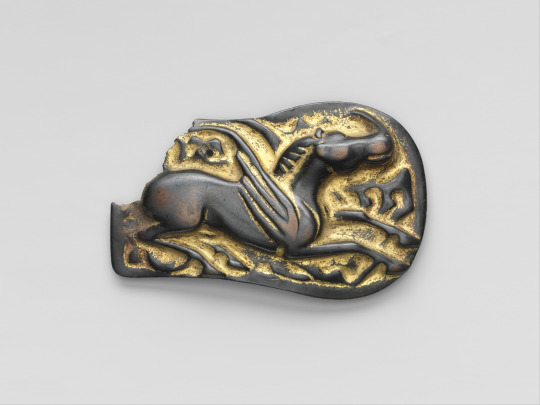

東漢(鮮卑文化) 鎏金翼馬紋銅飾板
~ Plaque with a Winged Horse.
Period: Eastern Han dynasty (25–220), Xianbei culture
Date: 1st century
Culture: North China
Medium: Gilt bronze
#ancient#ancient art#history#museum#archeology#ancient history#archaeology#china#chinese#ancient china#winged horse#horse#plaque with a winged horse#plaque#eastern han dynasty#xianbei#1st century
974 notes
·
View notes
Text

Pigsty with Tower
China, Eastern Han dynasty (A.D. 25–220)
135 notes
·
View notes
Photo



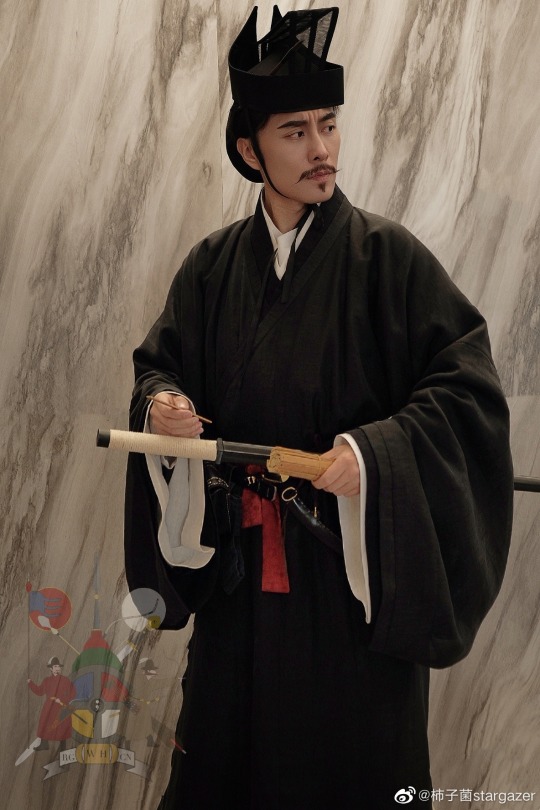






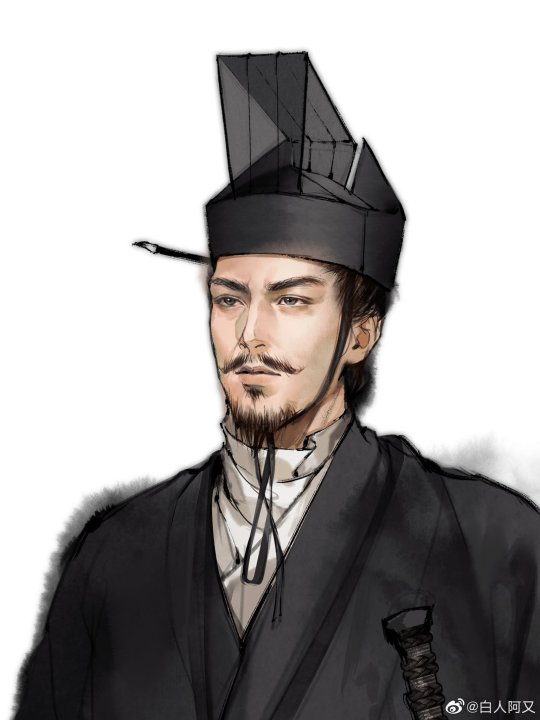
【Reference Artifacts】
Chinese Western Han Dynasty-Eastern Han Dynasty(202 BC – 9 AD, 25–220 AD) Murals and Stone Carvings
the court dress of Civil Officials during the Eastern Han(25-220)dynasty.
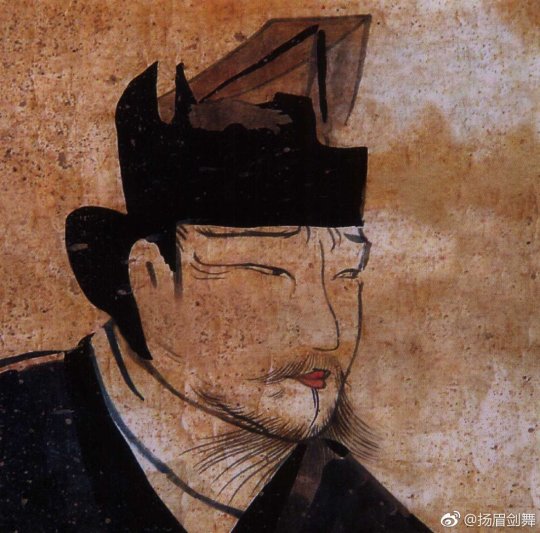
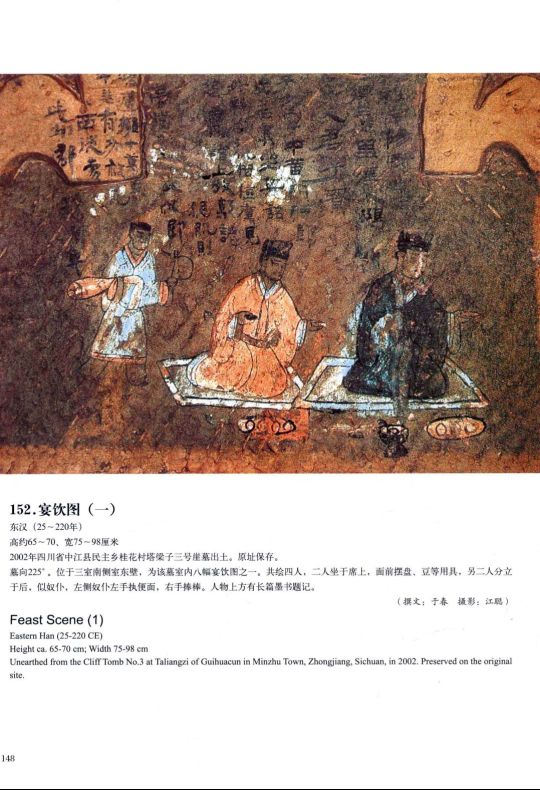
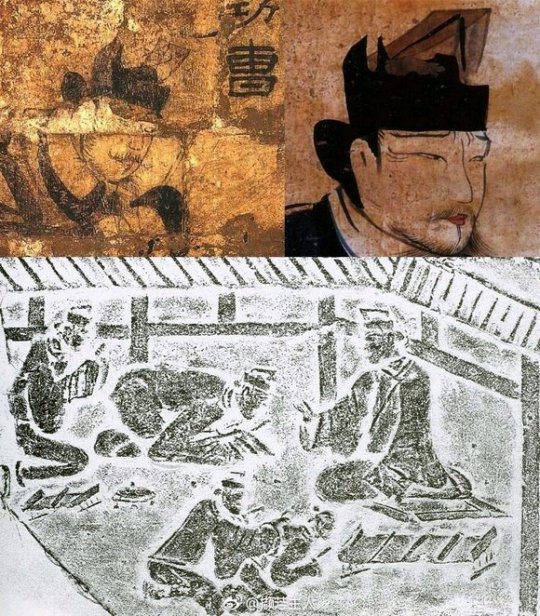
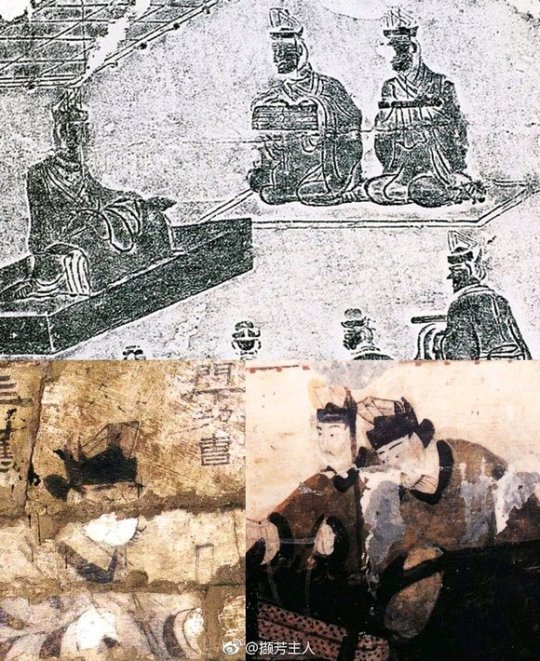
[Hanfu · 漢服]Chinese Eastern Han Dynasty (25–220 A.D.) Hanfu-Civil Officials Based On Han Dynasty Relics
【History Note】
In the Eastern Han Dynasty, officials were divided into civil officials(文官) and military officials (武官),and civil officials usually wore black robes and a cloth crown called "Jinxian Crown/進賢冠" on their heads.
The military officer (武官) is different from the civilian officer. They wear red robes and wear a crown call” Wubian DaGuan/Huben crown(武弁大冠 or 虎贲冠)”,These crown is characterized by always having two feathers on it
Refer to the picture below to distinguish between civil officials and military officials in the Eastern Han Dynasty
pic from Romance of the Three Kingdoms (TV series in 1994)
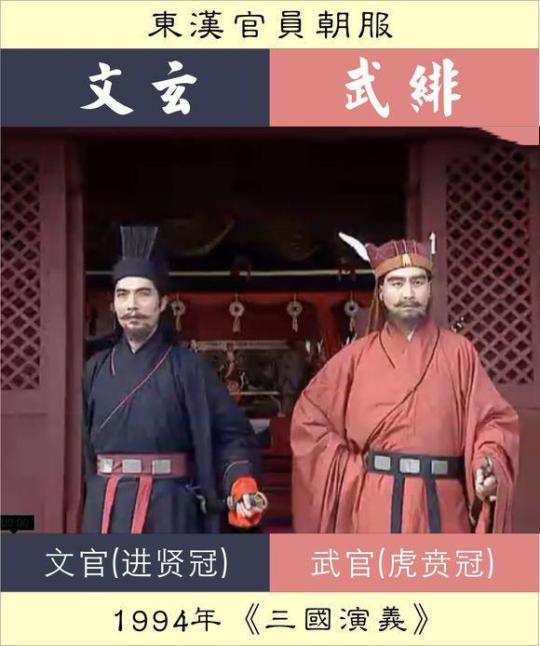
During the Three Kingdoms period(220–280 AD) in China (the end of the Eastern Han Dynasty), Zhuge Liang(諸葛亮), a well-known Chinese military engineer, strategist, statesman, and writer should wear the above civil official clothes when meet the emperor instead of wearing the clothes like below:

・↑Portrait of Zhuge Liang in the China Ming Dynasty(1368-1644 AD).
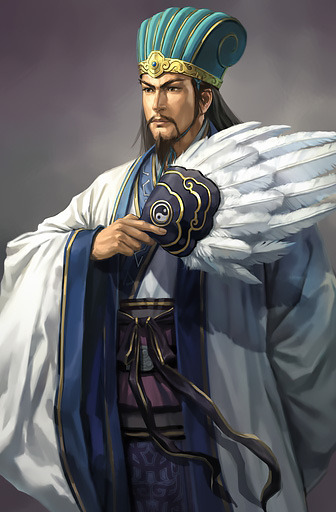
・↑The image of Zhuge Liang produced by a Japanese game company
----
The above image is the image of Zhuge Liang imagined by later generations combine with the actual costumes at the Song Dynasty(960��1279 AD) in China.
The Three Kingdoms game, including those made by the Japanese, is also based on the image of Zhuge Liang imagined and drawn by people after the Song Dynasty(960–1279 AD).
Which is not conform to the clothing that Zhuge Liang should have worn in Three Kingdoms period(220–280 AD,the end of the Eastern Han Dynasty)
________________
🙋♂️Model & Recreation Work:@柿子菌stargazer
📸Photo: @张宇莹-小花
🎨Painting Artist:@白人阿又
🔗Weibo:https://weibo.com/1812652835/N1w7AClHo & https://weibo.com/6137313995/Msbxt7ynG
________________
#chinese hanfu#Eastern Han Dynasty#Three Kingdoms period(220–280 AD)#Civil Officials#military officer#Zhuge Liang#Jinxian Crown/進賢冠#Wubian DaGuan/Huben crown(武弁大冠 or 虎贲冠)#皂緣中衣#皂禪衣#柿子菌stargazer#张宇莹-小花#白人阿又#hanfu#historical clothing#historical fashion#hanfu history#漢服#hanfu accessories#hanfu artifacts
325 notes
·
View notes
Text

Day 11: Yin Lihua!
Yin Lihua was born during the troubled end of China's Western Han Dynasty. She met her future husband, Liu Xiu, a farmer and distant relative of the royal house, when both were young; he supposedly remarked after their first meeting that "If I were to be an offical, I want to be Mayor of the Capital; if I were to marry, I want to marry Yin Lihua."
Soon after their marriage, her husband joined the rebellion against the usurper Wang Mang; he would be separated from Lihua for years, only reuiniting with her after he had declared himself Emperor... and after he had made a second, political marriage to a powerful general's niece, who had born him a son. Despite this, he still wanted to name Lihua his empress - it was she who refused, as she and her husband had no children together. She became Consort Yin, while Lady Guo took the throne of empress.
This, however, put the three in an awkward situation. Yin Lihua and Emperor Guangwu were, despite everything, still very much in love, and over the ensuing years had not one but five sons. This was a situation that some women would, historically, solve with murder, but Lihua instead seems to have tried to keep the peace - a situation the (understandably) frustrated Empress Guo made increasingly difficult.
In 41 AD, the Emperor deposed Empress Guo in favor of Yin Lihua, though he continued to treat her family with great favor and gave her the unique title of Princess Dowager by promoting her son. Lihua was a modest, circumspect empress, determined to promote harmony and not to over-promote her family. Her son Liu Zhuang succeeded his father as Emperor Ming; he would begin the Eastern Han Dynasty's golden age.
#yin lihua#chinese history#eastern han dynasty#han dynasty#awesome ladies of history#october 2023#hanfu#my art
40 notes
·
View notes
Text
As a Three Kingdoms fan, finally......recreation of Eastern Han and Three Kingdoms era military officials' attire, by 柿子菌Stargazer
Bgm is a xiao cover of "The Skies of History" (ED theme of 1994 TV show Romance of the Three Kingdoms)
“吾剑也未尝不利!”😀
29 notes
·
View notes
Video
NEAT
historical chinese fashion for men by 老八捌
#hanfu#mens hanfu#mens headwear#hats#mens hairstyles#history#reference#老八捌#qin dynasty#zhiju#guan#han dynasty#Eastern Han dynasty#jinbu#waist ornament#northern and southern dynasties#liangdang#tang dynasty#yuanlingpao#futou#song dynasty#tuanshan#zanhua#ming dynasty#daopao#bijia#fujin#video#audio
313 notes
·
View notes
Text
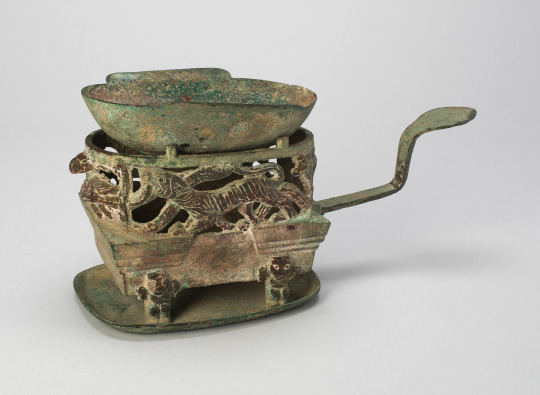
Pair of Braziers (Lu) with Eared Cups (Erbei)
China, late Western Han or early Eastern Han, 1st century B.C./1st century A.D.
Eared cups with warming stands were probably used to heat sauces for meat. Each side of these warming stands is cast with one of the Animals of the Four Directions (si shen)—the Green Dragon of the East, the White Tiger of the West, the Black Warrior (tortoise and snake) of the North, and the Red Bird of the South. In Han art, the pervasive appearance of these symbolic animals reflects a desire to center the owner within the favorable influences of the universe.
71 notes
·
View notes
Text
[Hanfu・漢服]Chinese Eastern Han Dynasty(25–220 AD) & Hairstyls Based On Han Dynasty Murals













【Historical Artifact Reference】:
Han Dynasty Tomb Murals in Chang Village, Xingyang, Henan, China




________________
Recreation Work:@晓琳装束
🔗Weibo:https://www.xiaohongshu.com/explore/66ebfba700000000270
________________
#chinese hanfu#Eastern Han Dynasty(25–220 AD)#hanfu#hanfu accessories#hanfu_challenge#china#chinese traditional clothing#chinese#chinese history#chinese fashion history#ancient china#chinese art#漢服#汉服#中華風#晓琳装束
174 notes
·
View notes
Photo

Liu Yao’s Army ‘The Yang Alliance’
(Left to Right)
Top Row
Xu Gong, Taishi Ci, Ze Rong
Upper Middle Row
Lu Kang, Yan Baihu, Yan Yu
Lower Middle Row
Liu Xun, Zhou Xin, Zhu Hao, Sheng Xian
Bottom Row
Hua Xin, Liu Yao, Wang Lang
A motley collection of scholars, warriors, eccentrics and opportunists.
Ze Rong was a treat to design. I’m surprised he doesn’t get more attention in 3K-related media.
#Liu Yao#Wang Lang#Hua Xin#taishi ci#yan baihu#ze rong#yang province#Sun Ce#Sun Wu#Eastern Wu#Three Kingdoms#Romance of the Three Kingdoms#sanguosha#sangoku#Han Dynasty#Cao Cao#historical fiction#webcomic#ttoca
4 notes
·
View notes
Photo
Chinese hanfu for men.



復興華夏風貌—— 東漢(Eastern Han)、盛唐(Tang)、晚明(Late Ming)
#hanfu#mens hanfu#han dynasty#eastern han dynasty#zhiju#shenyi#tang dynasty#yuanlingpao#ming dynasty#late ming dynasty#daopao#mens headwear#hats#r
100 notes
·
View notes
Text
Battle of Chibi: The Clash That Changed China's History
Prelude to the Battle The Battle of Chibi, also known as the Battle of Red Cliffs, took place in the winter of 208–209 AD during the late Eastern Han dynasty of China. This battle is one of the most famous and significant military engagements in Chinese history, marking a pivotal moment in the period known as the Three Kingdoms. The confrontation at Red Cliffs halted the advance of the powerful…
1 note
·
View note
Text

1 note
·
View note
Text
Formerly Han emperors had moved troublesome landowners to Chang'an so they could keep an eye on them, but Guangwu instead moved the capital to Luoyang (Figure 6.4), where the landowners were strongest and the magnates could monitor the court.*

*Historians often call this period 202 BCE - 9 CE the Western Han, because the capital was at Chang'an in the west, and the period 25-220 CE the Eastern Han, because the capital was at Luoyang in the east. Others prefer to speak of Former and Later Han.
"Why the West Rules – For Now: The patterns of history and what they reveal about the future" - Ian Morris
#book quotes#why the west rules – for now#ian morris#nonfiction#han dynasty#troublesome#land ownership#chang'an#guangwu#china#chinese history#luoyang#magnate#monitoring#historian#western han#eastern han#former han#later han
0 notes
Photo
NEAT










dramas we finished and liked in the 2010s
secret of the three kingdoms / 三国机密 (2018)
The series is set in the late Eastern Han dynasty of China. Consort Wang, a concubine of Emperor Ling, has just given birth to a pair of twin boys – Liu Xie and Liu Ping – when she is poisoned to death by the jealous Empress He. While Liu Xie is raised by his grandmother Empress Dowager Dong and becomes emperor (as Emperor Xian) later, Liu Ping is secretly taken out of the palace and raised as a commoner.
Eighteen years later, chaos have broken out throughout China as various warlords fight for power and control over territories. Emperor Xian has been reduced to the status of a puppet emperor under the control of a powerful warlord, Cao Cao. During this time, he learns that he has a secret twin brother, Liu Ping, so he summons his brother to the palace to help him save the Eastern Han dynasty from collapse. Throughout these years, Liu Ping has grown up with Sima Yi and never knew about his true origins until now.
#secret of the three kingdoms#drama recs#Han Dynasty#Eastern Han dynasty#hanfu#mens hanfu#drama costumes#drama
100 notes
·
View notes
Text










The Cryptic Motif of “Three Hares with Conjoined Ears”
On the Heavenly Palace decorative patterns found in the Mogao Caves at Dunhuang from the late Northern dynasties are images with cryptic patterns, including Buddha's head, the Taotie beast, deer, animals copulating, three hares with conjoined ears, and also writings. This type of decorative pattern is cryptic and difficult to understand and may be closely related to the history of the popular Eastern iconology and divination philosophy from the Han and Wei dynasties and Emperor Wu of Northern Zhou's suppression of Buddhism. They are important references for studying the related history of this period.
#china#motif#three hares with conjoined ears#silk road#culture influenced by buddhism from ancient india#art#reference
1K notes
·
View notes
Text
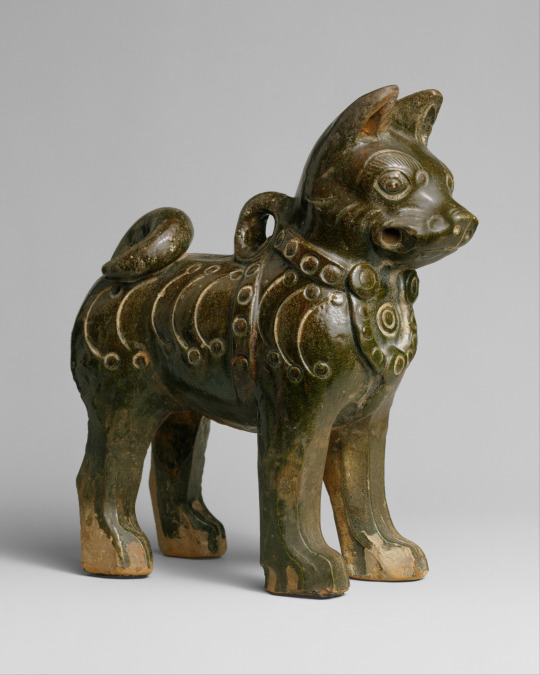
Earthenware figurine of a dog, China, Eastern Han Dynasty 25-220 AD
from The Metropolitan Museum of Art
3K notes
·
View notes